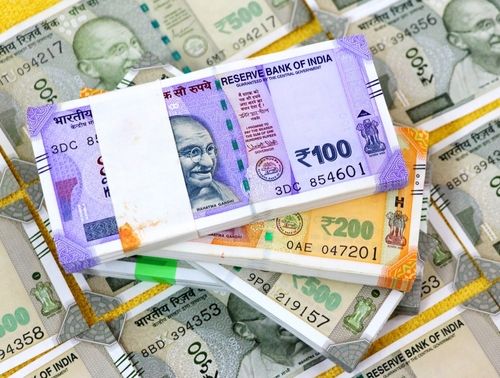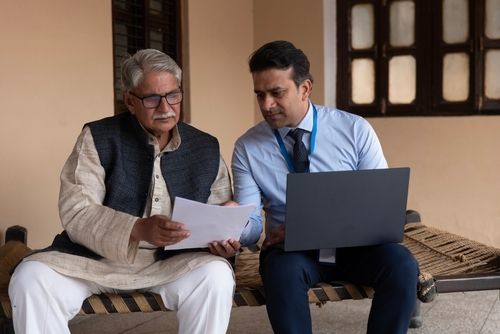How to Use Insurance to Build Long-Term Financial Security
Written by Upstox Desk
Published on July 15, 2025 | 6 min read

SUMMARY
Roughly 15 years ago, Avinash started his first job as a 23-year-old IT professional. As part of his personal financial planning (he was placed in the erstwhile highest tax slab), he took out a conventional life insurance policy, paying roughly 36000/—per annum as a premium for a 15-year term. A couple of months back, he received a maturity amount of INR 825000/-.
The Curious Case of Avinash: Insurance vs. Nifty 50 Returns
Avinash’s frustrations deriving from poor investment returns are justified. In the past 15 years, the Nifty 50’s returns compared with a traditional insurance plan are illustrated in the following table:
| Details | Investment in Insurance | Investment in Nifty 50 |
|---|---|---|
| Total Investment | INR 576,000 | INR 576,000 |
| Maturity Value | INR 825,000 | INR 1,600,752 |
| Absolute Returns | INR 249,000 | INR 1,024,752 |
| % Returns | 4.11% (IRR) | 11.86% (CAGR) |
On a prima facie basis, Avinash’s anger is justified. However, he is missing out on a few critical aspects:
- He received tax savings (approximately 30% of the premium) under Section 80C of the Income Tax Act, 1961, throughout the 15-year period.
- The maturity value he received is also** tax-free** under Section 10 of the Income Tax Act 1961.
- He missed an excellent opportunity to reinvest the tax savings in either FDs or index funds (such as Nifty 50).
- He was under life cover of INR 25 lakhs throughout the 15-year period, which provided financial stability to his nominees.
- As a risk-averse investor, he did not want to be too aggressive in the investment approach. In a few years, Nifty 50’s annual returns were as low as -51.79%, making the option highly volatile.
When all the factors are considered, the net returns are recalculated as follows:
| Details | Investment in Nifty 50 | Investment in Insurance and Tax Savings Reinvested in FDs @7% | Investment in Insurance and Tax Savings Reinvested in Index Fund |
|---|---|---|---|
| Tax Saved (@30%) | - | 172,800 | 172,800 |
| Returns on Reinvestment | - | 322,724 | 518,080 |
| Maturity Value | 1,600,752 | 825,000 | 825,000 |
| Tax on Gain (LTCG @12.50%) | 128,094 | - | - |
| Net Return | 896,658 | 571,274 | 767,080 |
| % Return | 10.38% | 6.61% | 8.88% |
Hence, it is about using your money wisely according to your risk profile. Since Avinash was risk-averse, his net returns could have been close to 9% annually. At the same time, his family’s future was secure because of the life cover offered by the insurance company.
Even for a risk-loving investor, facing market volatility for 10.38% returns, slightly above the above, cannot be a great deal.
Besides the conventional life insurance plans, you should also consider the importance of term life insurance plans for financial planning. Here is how long-term financial stability is guaranteed through the best usage of insurance:
Covering All Unexpected Events
Financial security goes beyond a dream house or a luxury car. It is about protecting your family and loved ones in case of mishaps and unexpected events. Insurance covers different aspects, including death, permanent disability and critical illness, which can affect your regular income.
There are rider options (such as accidental death and disability) that support your family in such situations. Hence, a critical amount of risk is transferred to the insurance company through different policies.
Achieving Long-Term Financial Goals: Wealth Accumulation Insurance acts more than a safety net for your family. It helps in retirement planning and attaining long-term goals because the tenures are usually long, and you keep investing for more than a couple of decades in a few cases. With life insurance policy proceeds being tax-free in a few cases, it can work as an excellent pension plan, especially for investors starting early.
Complementing Other Investment Alternatives
Since diversification is the cornerstone of personal financial planning, having insurance in your portfolio offers protection and long-term savings. It works well as a risk-free investment alongside high-risk options such as stocks, mutual funds, and other alternative investments.
Flexibility Options Like No Other Investment
Insurance is the subject of solicitation. This ‘marketing snippet’ implies that you need to ask questions and discuss your financial requirements. Insurance companies offer children's education plans, retirement plans, pension plans, housing plans, and loans on insurance policies, which you can use for your needs.
There are hardly any other investment tools that provide so much flexibility in the hands of investors and aim to resolve different life issues through mostly tax-free alternatives. You need to explore your requirements, and your insurance company can devise a plan for them.
Summing up
Reiterating the original example once again, Avinash could have gotten a better ROI if insurance had been used more effectively. Which investment alternative you can include in the portfolio depends on your personal financial goals and risk profile. However, insurance as a security net and a tool to achieve long-term life goals has been quite efficient.
You should have enough coverage (in the case of life insurance). You must be aware of different policy offerings (such as rider options, pension plans, disability benefits, term insurance etc.) based on which insurance can not only be a wonderful risk-free investment in your portfolio; it can also be an effective wealth-generating tool in a volatile market.
FAQs
Why is insurance considered a good financial tool despite low returns?
Insurance offers risk coverage, tax benefits, and long-term financial stability while complementing other investment options.
What are the advantages of combining insurance with other investments?
Diversifying with insurance ensures protection against risks while balancing high-risk investments like stocks or mutual funds.
Can tax savings enhance the returns on insurance investments?
Reinvesting tax savings in FDs or index funds can significantly improve the overall returns from insurance policies.
What makes term life insurance an essential part of financial planning?
Term life insurance offers affordable and high-value coverage to safeguard your family against unexpected events.
About Author
Upstox Desk
Upstox Desk
Team of expert writers dedicated to providing insightful and comprehensive coverage on stock markets, economic trends, commodities, business developments, and personal finance. With a passion for delivering valuable information, the team strives to keep readers informed about the latest trends and developments in the financial world.
Read more from UpstoxUpstox is a leading Indian financial services company that offers online trading and investment services in stocks, commodities, currencies, mutual funds, and more. Founded in 2009 and headquartered in Mumbai, Upstox is backed by prominent investors including Ratan Tata, Tiger Global, and Kalaari Capital. It operates under RKSV Securities and is registered with SEBI, NSE, BSE, and other regulatory bodies, ensuring secure and compliant trading experiences.

























